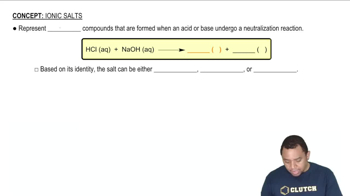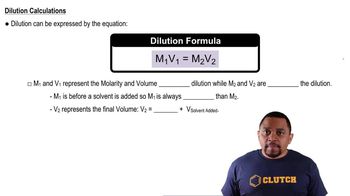Here are the essential concepts you must grasp in order to answer the question correctly.
Ionic Dissociation
Ionic dissociation refers to the process by which an ionic compound separates into its constituent ions when dissolved in a solvent, typically water. For example, when AlCl3 dissolves, it dissociates into one Al³⁺ ion and three Cl⁻ ions, resulting in a higher concentration of Cl⁻ ions compared to a compound that dissociates into fewer ions.
Recommended video:
Molarity and Concentration
Molarity (M) is a measure of concentration defined as the number of moles of solute per liter of solution. It is crucial for comparing solutions, as higher molarity indicates a greater amount of solute in a given volume. Understanding how to calculate and compare molarity helps determine which solution has a higher concentration of specific ions.
Recommended video:
Volume and Dilution Effects
The volume of a solution affects the total number of moles of solute present. When comparing solutions, it is important to consider both the concentration and the volume to find the total amount of a specific ion. For instance, a larger volume of a lower concentration solution may contain more total moles of an ion than a smaller volume of a higher concentration solution.
Recommended video:




